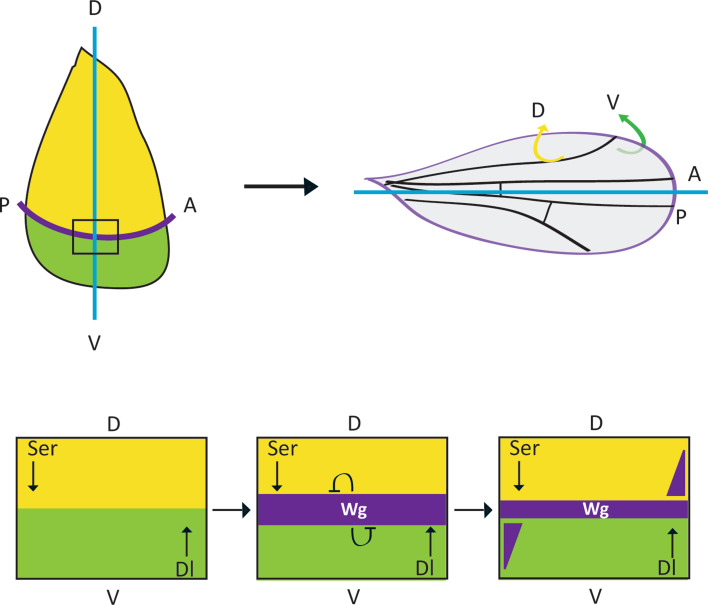Fig. 4.
Wingless–Notch interactions shape the developing fly wing. The adult fly wing comprises two overlaid epithelial sheets: the dorsal side (D-yellow) and the ventral side (V-green) with wing margin tissue at the D-V border (purple) (top panel). The adult wing tissue is derived from the larval imaginal disc (left), which is patterned by Wingless–Notch interactions (outlined below). Within the developing wing, Notch signalling is initially activated in a broad stripe at the D-V boundary, by expression of the ligands Serrate and Delta in the D and V compartments (left). Notch activates the expression of Wg (purple), which then refines this stripe of Notch activity in two ways: Wingless signalling maintains Notch ligand expression in the cells that flank the margin so that they can signal back to the margin cells and maintain Notch activity, and Wingless also inhibits Notch signalling in the cells outside of the margin through direct crosstalk. These interactions result in a gradient of Wingless activity with high threshold targets expressed close to the D-V boundary and lower threshold targets expressed further away

